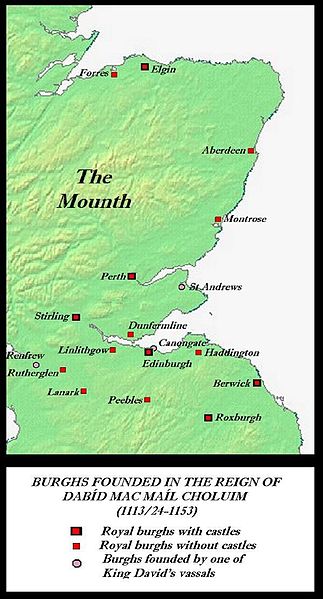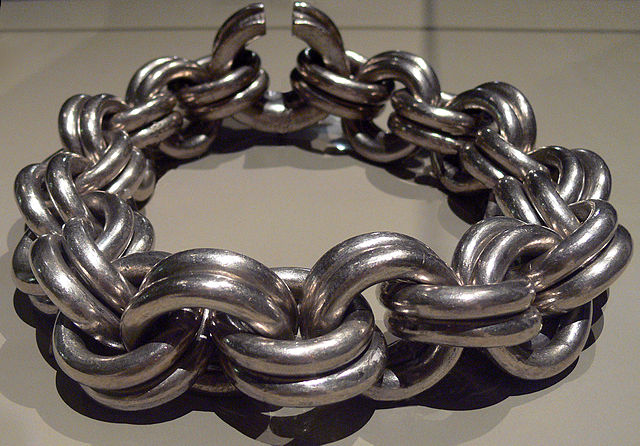Scotland in the High Middle Ages
The High Middle Ages of Scotland encompass Scotland in the era between the death of Domnall II in 900 AD and the death of King Alexander III in 1286, which was an indirect cause of the Wars of Scottish Independence.
Sueno's Stone Located in Forres, in the old kingdom of Fortriu, this gigantic probably post-Pictish monument marks some kind of military triumph
St Margaret of Scotland, wife of Máel Coluim III, from a later genealogy
Burghs established in Scotland before the accession of Máel Coluim, essentially Scotland-proper's first towns
Coronation of King Alexander on Moot Hill, Scone, beside him are the Mormaers of Strathearn and Fife.
The Picts were a group of peoples in what is now Scotland north of the Firth of Forth, in the Early Middle Ages. Where they lived and details of their culture can be gleaned from early medieval texts and Pictish stones. The name Picti appears in written records as an exonym from the late third century AD. They are assumed to have been descendants of the Caledonii and other northern Iron Age tribes. Their territory is referred to as "Pictland" by modern historians. Initially made up of several chiefdoms, it came to be dominated by the Pictish kingdom of Fortriu from the seventh century. During this Verturian hegemony, Picti was adopted as an endonym. This lasted around 160 years until the Pictish kingdom merged with that of Dál Riata to form the Kingdom of Alba, ruled by the House of Alpin. The concept of "Pictish kingship" continued for a few decades until it was abandoned during the reign of Caustantín mac Áeda.

The Aberlemno I roadside symbol stone, Class I Pictish stone with Pictish symbols, showing (top to bottom) the serpent, the double disc and Z-rod and the mirror and comb
Silver plaque from the Norrie's Law hoard, Fife, with double disc and Z-rod symbol
The so-called Daniel Stone, cross slab fragment found at Rosemarkie, Easter Ross
The Whitecleuch Chain, high-status Pictish silver chain, one of ten known to exist, dating from between 400 and 800 AD








